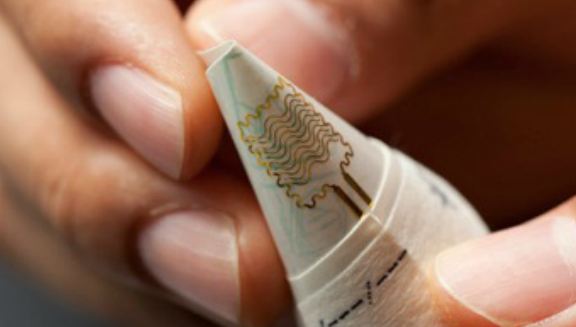Making stretchable electronics
September 5, 2012
MC10, a startup, is getting ready to commercialize high-performance electronics that can stretch, allowing for innovations such as skin patches that monitor whether the wearer is sufficiently hydrated, or inflatable balloon catheters equipped with sensors that measure electrical misfiring caused by cardiac arrhythmias, Technology Review reports
To make both the hydration-sensing patch and the catheter, gold electrodes and wires just a few hundred nanometers thick are deposited on silicon wafers by conventional means, then peeled off and applied to stretchable polymers.
The technologies have advantages over other approaches to flexible electronics. For example, organic polymer electronics can only bend, not stretch, and they are slower than devices made of inorganic semiconductor materials or precious metals such as gold, so they can’t provide precise real-time biological readings.
MC10 is working on patches that use sensors to detect heartbeat, respiration, motion, temperature, blood oxygenation, and combinations of these indicators.
MC10’s skin patches can wirelessly transmit information to a nearby smartphone. A phone with a near-field communication chip can be waved over the patch, or the patch can be paired with a thin-film battery made by a commercial supplier, allowing continuous data transmission.
Next up will be balloon catheters that a cardiologist could snake through the heart to detect areas of misfiring cardiac tissue. Some of the prototypes in preclinical testing have dense arrays of electrodes that allow high-resolution mapping and ablation of that tissue. Further off are other medical devices, including implantable materials that conform to brain tissue, sensing seizures and stopping them.
